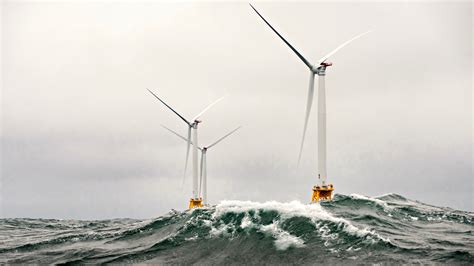
Gavin Newsom’s Carbon-Neutral Grid Plan Looks To Be Going The Way Of The Bullet Train To Nowhere
California’s planned transition to a carbon-neutral electricity grid by 2045 relies heavily on offshore wind power. It might take a miracle to get there. The growth of offshore wind will have to accelerate faster than a Tesla Model S, which goes from zero to 60 in less than two seconds.
As of 2023, there is no offshore wind in California. But, as the Los Angeles Times reports, “state and local governments are banking on offshore wind to help reach their renewable energy goals.” CalMatters environment reporter Nadia Lopez says “California is betting on giant wind farms in the ocean to strengthen the grid and meet [the state’s] renewable energy goals.”
The potential is there. So are the hurdles.
“The California coast is home to some of the best offshore wind resources in the country,” says the energy and environmental blog of law firm Davis Wright Tremaine. The National Renewable Energy Laboratory estimates there is the potential to generate 201,000 megawatts of power off the coast. Plans call for the state to harness from 2,000 to 5,000 megawatts of it by 2030, then 25,000 megawatts (25 gigawatts) by 2045, generating enough electricity for 25 million homes. (There are currently about 14.5 million housing units in California, according to the Census Bureau).
But this is California, where building anything, in particular massive public works projects — say, a bullet train — is a task that is grueling, protracted and in some instances impossible.
The most stubborn barrier to overcome — and who could have guessed this? — will be cost. MIT Technology Review says California’s “audacious plans” run up against “a daunting geological challenge.” Just a few miles off the coast, the continental shelf drops sharply. This “makes it prohibitively expensive to erect standard offshore wind turbines which are set atop fixed structures that extend to the seafloor.” Turbines located near Morro Bay, where the water is 4,300 feet deep, will have to be built on floating platforms. But these floating turbines are not only “speculative,” says MIT, the technology behind them is also “very costly.” As of now, there are only a handful of floating offshore wind platforms in the world and the combined output of these demonstration projects, 123 megawatts, is meaningless on a global scale.
The University of California Berkeley’s Center for Environmental Public Policy says that nearly 24 of the 25 gigawatts of planned offshore electricity will be produced from windmills floating on platforms.
This of course will cause costs to rise to unaffordable levels. At $1.04 per megawatt hour, offshore wind has the most expensive “levelized cost of electricity and levelized cost of storage for new resources entering service in 2027,” according to the U.S. Energy Information Administration. Battery storage is next at 64 cents per megawatt hour. All dispatchable sources are far cheaper, including nuclear, which would cost 61 cents per megawatt hour.
There are also logistical detours and roadblocks ahead. Adam Stern, executive director of Offshore Wind California, an industry group, says to expect the planning and regulatory process to drag out (our words, not his) for five to six years.
The same eco-warriors who have pressured the state to close natural gas and nuclear plants, and wield almost unlimited political clout in Sacramento and Washington, will find environmental hazards to justify their opposition to offshore wind. Fishermen will protest the negative impacts on their livelihoods, and engineering, material and cost challenges associated with the underwater cables needed to anchor floating turbines and move the power they generate are bound to emerge.
And should the state decide to locate turbines nearer to shore to avoid the high cost of floating platforms, there will be opposition from rich coastal elites who don’t want their views by the spinning monsters.
What’s more, offshore wind is vulnerable to tsunamis, the threat of which is “high to very high” on the West Coast.
We are in the fourth month of 2023, not 22 years from the state’s 2045 deadline, and not a single offshore wind project has been started. It’s unlikely we will see even a glimpse of progress for years, maybe not even in this decade. Despite the obvious obstacles ahead, there’s been no talk of revisiting a surely impossible target date, no sense of uneasiness in Sacramento, just an Admiral Farragut “damn the torpedoes” mindset that has the potential to sink California.

Comments (0)